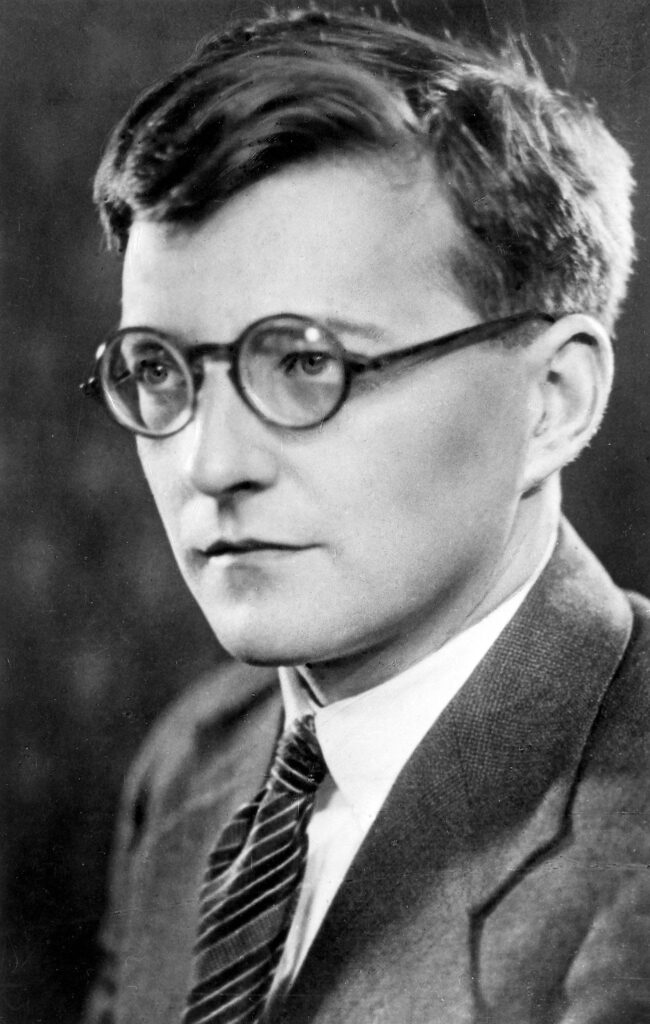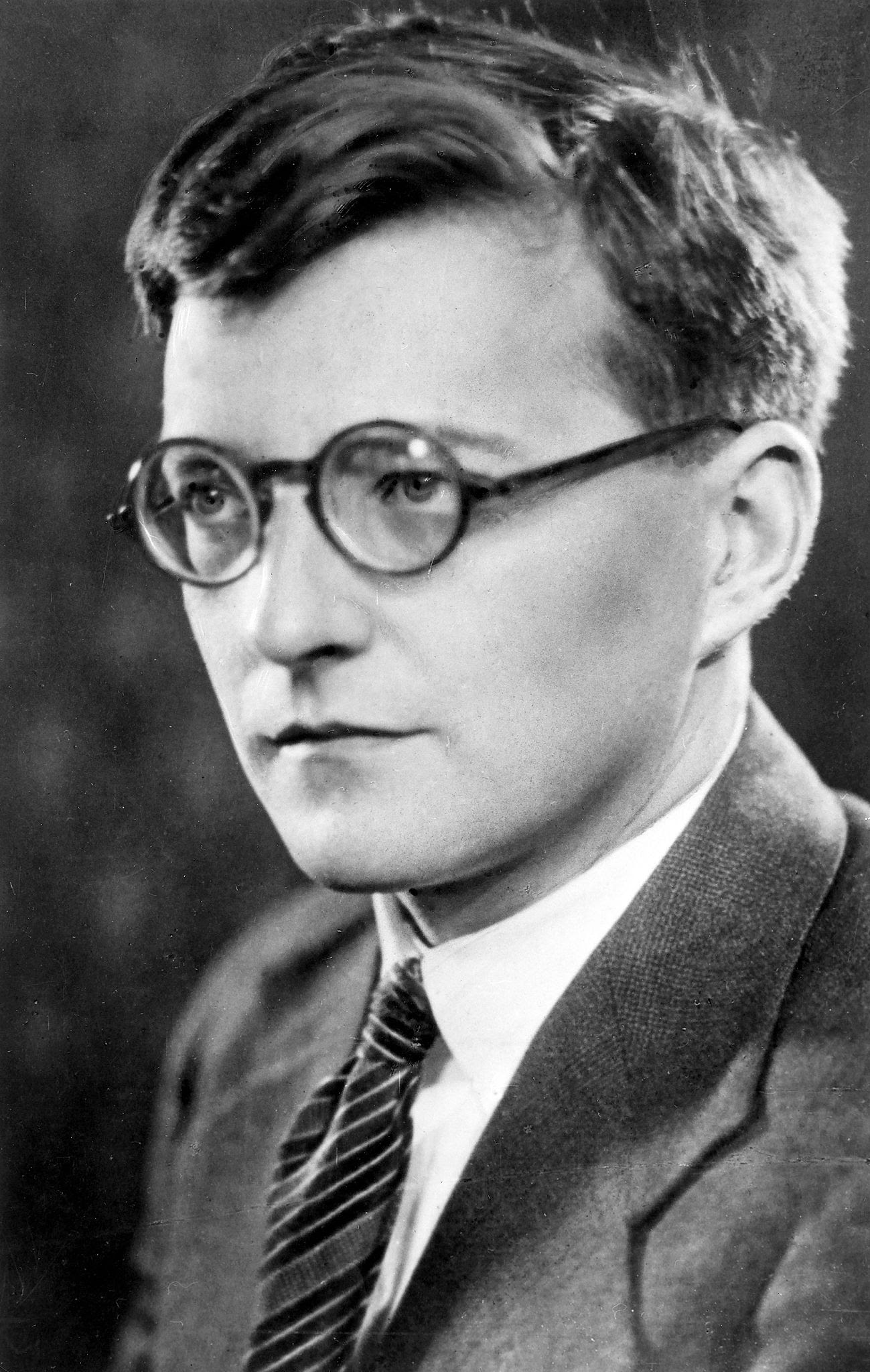Table of Contents
Introduction – Who was Dmitri Shostakovich?
Dmitri Shostakovich was a prominent Russian composer and pianist recognized for his significant contributions to classical music. Born on September 25, 1906, in St. Petersburg, Russia, he showcased exceptional musical talent from a young age. Shostakovich’s early exposure to different musical techniques and influences greatly shaped his unique musical language, setting the stage for his prolific career as a composer and pianist.
Early Life and Career
Shostakovich’s musical journey began at the Petrograd Conservatory, where he studied under the guidance of prominent composers and musicians. His early compositions reflected a blend of traditional Russian elements with innovative harmonies and structures, showcasing his distinct style from the outset of his career.
Impact of Mahler’s Music
The music of Gustav Mahler, an Austrian composer, had a profound influence on Shostakovich’s compositional style. Mahler’s symphonic works deeply resonated with Shostakovich, inspiring him to explore new dimensions in symphonic composition and orchestration, ultimately shaping the evolution of his musical repertoire.
Soviet Composer
Living and creating during the tumultuous years of the Soviet era, Shostakovich’s compositions bore the imprint of the political and social climate of his time. His experience as a Soviet composer significantly influenced the thematic and emotive richness of his musical works, paving the way for his legacy as a leading figure in Soviet music.
Shostakovich’s Popular Symphonies
First Symphony
Shostakovich’s First Symphony, composed when he was just 19 years old, marked the beginning of his journey into the realm of symphonic composition. This groundbreaking work displayed a maturity and depth that belied his age, earning him acclaim as a prodigious talent in the world of classical music. The symphony, written in the aftermath of the Russian Revolution and during a time of great political and social upheaval, reflects Shostakovich’s keen awareness of the world around him.
The first movement, with its brooding and somber melodies, captures the sense of uncertainty and turmoil of the era, while the whimsical and energetic second movement showcases the composer’s playful and irreverent side.
The symphony’s grand finale is a triumph of resolve and optimism, reflecting the resilience of the human spirit in the face of adversity. Throughout the work, Shostakovich demonstrates a command of orchestration and a gift for melody that set him apart as a composer of great promise.
Shostakovich’s First Symphony remains a powerful and poignant work, a testament to the enduring legacy of a prodigious young talent who would go on to become one of the most important and influential composers of the 20th century.
Second Symphony
Dmitri Shostakovich’s Second Symphony, also known as the To October, was composed in 1927 to commemorate the 10th anniversary of the October Revolution. The piece is a stark contrast to his first symphony, showcasing a much more experimental and avant-garde style. Shostakovich incorporated folk tunes and revolutionary songs into the symphony, reflecting the political and social climate of the time. The symphony is divided into three movements, with the first movement beginning with a powerful and dramatic theme, leading into a lively and festive middle section. The second movement is a lively scherzo, while the final movement is a grand and triumphant conclusion.
The symphony received mixed reviews upon its premiere, with some critics praising its innovative and impactful composition, while others were more critical of its radical departure from traditional symphonic structure. Despite the controversy, the Second Symphony remains an important work in Shostakovich’s early repertoire and a reflection of the tumultuous period in which it was created.
Fourth Symphony
Shostakovich’s Fourth Symphony is a monumental work, characterized by its dramatic and intense musical language. Composed in the 1930s, this symphony was initially intended to be premiered in Leningrad, but the composer withdrew it before the performance due to fear of political persecution. The symphony is known for its dissonant harmonies, powerful orchestration, and complex structure, showcasing Shostakovich’s innovative approach to symphonic writing.
The music is filled with angst, turmoil, and a sense of impending doom, reflecting the political and social unrest of the time. Despite its initial rejection, the Fourth Symphony has gained recognition as one of Shostakovich’s most important and compelling works. It is a striking example of the composer’s ability to convey deep emotion and introspection through music, and it continues to captivate audiences with its raw power and expressive intensity. The Fourth Symphony stands as a testament to Shostakovich’s artistic vision and his willingness to push the boundaries of musical expression.
Fifth Symphony
One of Shostakovich’s most celebrated symphonic works, the Fifth Symphony, stands as a defining masterpiece in his repertoire. Its emotional depth and evocative themes captured the essence of the human experience, resonating with audiences worldwide and solidifying Shostakovich’s reputation as a great composer of his time. Composed in 1937, during a time of intense political pressure and scrutiny in the Soviet Union, the Fifth Symphony is often interpreted as a response to the oppressive regime under Joseph Stalin. Shostakovich’s skillful orchestration and powerful melodies convey a sense of struggle, despair, and eventual triumph, reflecting the turbulent atmosphere of the era.
The symphony’s opening movement sets the tone with a brooding and ominous atmosphere, leading into a haunting and introspective second movement. The third movement provides a stark contrast with its energetic and fervent pace, while the final movement offers a sense of resolution and triumph, concluding with a triumphant and heroic finale.
The Fifth Symphony’s impact extends beyond its artistic achievement, as it also holds a symbolic significance in the context of Shostakovich’s own life. The symphony’s triumphant conclusion has been interpreted as a form of subtle defiance against the repressive political climate, as the composer subtly communicated his own resilience and hope for the future through his music.
Throughout the years, the Fifth Symphony has continued to captivate audiences with its profound emotional depth and thematic richness. Its universal themes of struggle, redemption, and resilience have allowed it to transcend its original context and resonate with listeners of all backgrounds.
The enduring popularity and significance of Shostakovich’s Fifth Symphony serve as a testament to the power of music to capture the human experience and convey profound emotional truths. It stands as a timeless masterpiece that continues to inspire and move audiences with its unparalleled beauty and complexity.
Seventh Symphony
Amidst the turmoil of World War II, Shostakovich composed his Seventh Symphony, also known as the “Leningrad Symphony.” This monumental opus was a powerful testament to the resilience of the human spirit in the face of adversity, embodying the indomitable will of the people during a time of great hardship and strife. The symphony was first performed in Leningrad (now St. Petersburg) in 1942, during the infamous Siege of Leningrad, when the city was surrounded by Nazi forces and tens of thousands of residents were dying of starvation and cold.
The performance was a powerful symbol of defiance and strength, as the musicians and the audience united in their determination to resist the enemy and uphold the spirit of their city.
Shostakovich’s Seventh Symphony became a symbol of hope and defiance, not only for the people of Leningrad but for the entire Soviet Union and the world at large. Its broadcast and performance in the besieged city served as a beacon of hope and solidarity, inspiring people to stand strong in the face of unimaginable suffering.
The significance of Shostakovich’s Seventh Symphony extended far beyond the borders of Leningrad and the Soviet Union. It became a powerful emblem of resistance and resilience, resonating with audiences around the world who were also grappling with the horrors of war. Its message of strength and endurance in the face of adversity continues to inspire and uplift listeners to this day.
In essence, Shostakovich’s Seventh Symphony stands as a testament to the enduring power of music to convey human experience and emotion, and to unite people in a shared sense of determination, hope, and perseverance.
Shostakovich’s Chamber Works
String Quartet Compositions
Shostakovich’s string quartets exemplify his mastery of chamber music, revealing a rich tapestry of emotions and musical complexity. Each composition within this genre showcases his ability to weave intricate melodies and harmonies, solidifying his status as a pioneering figure in the realm of string quartet compositions.
Chamber Music Contributions
Shostakovich’s contributions to the chamber music repertoire encompass a wide array of compositions that showcase his versatility and ingenuity as a composer. His chamber works display a profound understanding of musical expression and form, earning him acclaim as a formidable force in the world of classical chamber music.
24 Preludes and Fugues
Shostakovich’s “24 Preludes and Fugues” stands as a monumental work that highlights his exceptional command of counterpoint and keyboard composition. This magnum opus, inspired by the works of Johann Sebastian Bach, reflects Shostakovich’s ability to infuse traditional forms with his own distinctive voice, resulting in a collection of timeless musical gems. Each prelude and fugue in the set showcases Shostakovich’s ability to blend intricate contrapuntal textures with emotional depth and complexity. The pieces range from introspective and contemplative to fierce and rhythmically driven, demonstrating the full range of Shostakovich’s compositional prowess.
The set was composed in 1950-1951 and was dedicated to Shostakovich’s friend and mentor, Tatiana Nikolayeva, who later became the first pianist to perform the entire cycle in public. The work was not widely known during Shostakovich’s lifetime, but has since earned its rightful place in the standard repertoire for pianists worldwide.
Shostakovich’s “24 Preludes and Fugues” stands as a testament to his extraordinary ability to revive and reinvigorate historical musical forms while maintaining a keen sense of individual expression. The work remains a cornerstone of the piano literature and continues to inspire and captivate audiences with its blend of technical mastery and emotional depth.
The Life and Work of Shostakovich
Challenges Faced as a Composer
Throughout his career, Shostakovich faced immense challenges as a composer within the sociopolitical framework of the Soviet Union. His creative freedom was often hindered by the demands of the state, compelling him to navigate complex political terrain while striving to uphold his artistic integrity. At times, Shostakovich faced severe censorship and criticism from the government, who expected his music to portray a positive image of Soviet society. This pressure led to instances where he had to compromise his artistic vision in order to conform to the demands of the state.
However, Shostakovich also found ways to subtly express his dissent and critique through his compositions, using coded language and symbolism to convey his personal feelings about the oppressive regime.
Despite the challenges, Shostakovich managed to maintain his position as one of the most renowned composers of the 20th century. His ability to navigate the difficult political landscape while staying true to his artistic vision is a testament to his resilience and unwavering dedication to his craft. His music continues to be celebrated for its emotional depth, technical brilliance, and profound commentary on the human condition, making him a legendary figure in the world of classical music.
Shostakovich’s legacy serves as a reminder of the power of art to transcend political boundaries and speak to the universal experiences of humanity. His ability to navigate the complexities of Soviet society while creating enduring works of art solidifies his place in history as a composer who managed to thrive in the face of adversity.

Shostakovich’s Composition Style
Shostakovich’s composition style is characterized by its intricate blend of emotive depth, thematic complexity, and skillful craftsmanship. His ability to evoke profound emotions through his musical language, combined with his adept use of structure and form, has solidified his reputation as a masterful composer with a lasting impact on the world of classical music. Throughout his works, Shostakovich often incorporated a wide range of influences, including aspects of Russian folk music, neo-classical elements, and innovative harmonic and melodic ideas. His compositions are known for their intense emotional content, often expressing themes of suffering, oppression, and resilience.
One of the most notable aspects of Shostakovich’s composition style is his use of musical irony and satire. This can be heard in works such as his Symphony No. 5 and his String Quartet No. 8, where he used his music to subtly critique the Soviet regime while still adhering to the confines of socialist realism.
Shostakovich’s adept use of orchestration and instrumentation is also a defining characteristic of his style. He was able to create powerful and evocative textures through his skilled manipulation of instrumental timbres, resulting in a rich and dynamic sonic palette.
Overall, Shostakovich’s composition style can be described as multi-faceted, deeply expressive, and intellectually engaging. His works continue to captivate audiences and musicians alike, ensuring his legacy as one of the most significant composers of the 20th century.
Death of Shostakovich in 1953
Following a lifetime of inimitable artistic achievements, Dmitri Shostakovich passed away on August 9, 1975, leaving behind a musical legacy that continues to inspire and captivate audiences worldwide. His enduring contributions to the classical music canon ensure that his legacy will remain immortalized for generations to come.
Conclusion
Dmitri Shostakovich stands as a towering figure in the world of classical music, a composer whose works encapsulated the depth and complexity of the human experience. His ability to weave profound emotional narratives through his symphonies, chamber works, and other compositions, while navigating the turbulent political landscape of his time, marks him as not just a musical genius but also a resilient and insightful artist. Shostakovich’s legacy endures in his rich, diverse body of work, which continues to resonate with audiences and musicians alike, a testament to the enduring power and relevance of his musical voice.
Additional Reading
Breve Music Studios publishes music to Spotify, YouTube Music, Amazon Music and more. Follow our pages on Facebook, Instagram, Twitter, TikTok, and YouTube.
Listen to our ensembles: Breve Orchestra, Breve Music Ensemble, Breve Low Brass Ensemble, Breve Woodwind Ensemble, and Jermaine Harris on Spotify.

